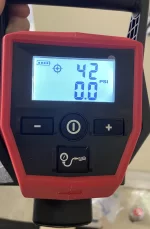- Joined
- Jan 9, 2022
- Messages
- 47
- Reaction score
- 11
- Cars
- Lucid Air Dream
I'm new to the whole EV experience but one of the big selling points with Lucid was battery range. We've had our DE for a month now and only been driving local, charging with the "daily" setting. Yesterday we decided to take a trip out to see our son who is about 110 miles away. We had things charged up to about 78%, with miles reading 368 so figured no problem at all. Unfortunately, when we reached the destination the range was already down to 180 miles, having only completed the first leg. Most all the driving was 4 lanes or interstate driving between 65-80 MPH. We ended up stressing on the way home, but made it back with about 25 miles left on the battery indicator. So we start out with 368 miles of range for a 220 mile trip and barely make it back. Realizing that the range is an estimate and road conditions, speed, etc all factor into the actual range, we were shocked at how far off that calculation was. Are we missing something, or should we be talking to Lucid customer service?

